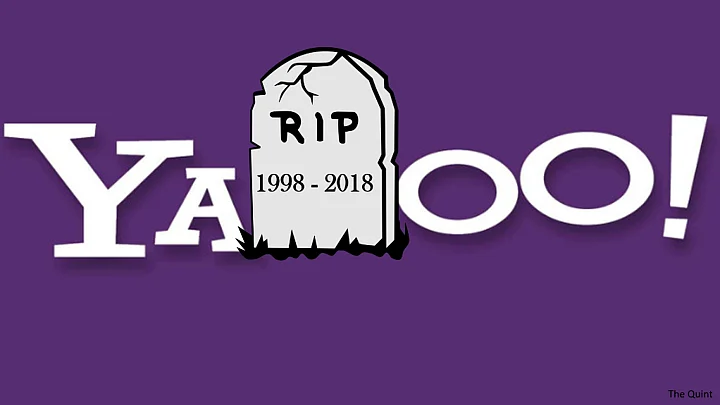Yet another instant messaging app lands up in the trash can, unable to fight the might of Facebook & Whatsapp among others in the messaging landscape. Yahoo Messenger is winding down its services on 17 July, as it continues to experiment with ways to stay alive in the messaging space. Users will now be redirected to the Squirrel Group chat app.
Yahoo is owned by Oath, which is a part of the telecom giant Verizon. Interestingly, telecom players have been the ones most affected by the proliferation of instant messaging apps, as call minutes have dropped while cheaper data consumption has increased.
Yahoo has had no active user growth in its messaging service alone, as most users who have a Yahoo ID can access everything from mail to news services. Yahoo Messenger first started on 9 March, 1998.
Your Yahoo ID will remain intact and you can continue to access other services. You can still download your data from messenger over the next six months if you wish.
Over the past two decades many popular instant messaging platform have blossomed, flourished and then faded away - either being shut down or transformed into a new avatar, with limited success. Here are some of them.
MSN Messenger
Microsoft was one of the first to introduce a standalone instant messaging software, mainly for the PC desktop back in 1999. Branded MSN Messenger, it worked with your Hotmail email ID or your MSN ID. It went through various iterations until it was rebranded in 2005 as Windows LIve Messenger.
At one point in 2009, it had over 330 million active users. Following Microsoft’s acquisition of Skype in 2011, the services were merged. Windows Live Messenger / MSN Messenger finally ceased to exist officially from Microsoft in late 2013.
Current status: Discontinued (exists as Skype)
ICQ Chat
ICQ which derives its name from the phrase “I seek you” was first developed by an Israeli firm, Mirabilis, in 1996. This chat room based instant messaging platform is what introduced most people to the world of online chat rooms and instant messaging. The platform was taken over by AOL in 1998, before being sold to a Russian group in 2010.
It uniquely had a sign-in account number instead of a name to login. It saw a steady decline in active users, from 100 million in 2001 to just over 11 million in 2013. It has since revamped itself.
Current Status: Web-based chatroom
AOL Instant Messenger (AIM)
AOL Instant Messenger started off in May 1997 and although not very relevant to India, saw many users using it in the country as well. It’s largest market was North America. It started off as a standalone software for the desktop, before going to a mobile version in 2008.
Usage steadily declined owing to competition from Facebook and others. By December 2017, AIM was officially shut down.
Current Status: Discontinued
GTalk (Now Hangouts)
Gtalk started its service in 2005, much later than most of the other messengers. Owing to the popularity of Gmail, the Gtalk service was also used frequently. It was offered as a standalone app as well as being integrated with Gmail. However, Gtalk as a service soon evolved into Google Hangouts, with the old chat interface ceasing to exist in favour of a multimedia interface. By 2015, Gtalk had merged with Hangouts.
Current status: Exists as Google Hangouts
(At The Quint, we question everything. Play an active role in shaping our journalism by becoming a member today.)
